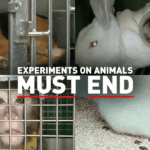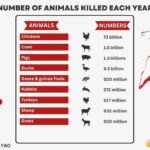Animal cruelty in circuses is an issue that has persistently garnered attention over the years. While circuses often present a spectacle brimming with wonder and delight, the reality behind the scenes tells a starkly different story. As awareness has burgeoned, so too has the movement to dismantle these antiquated institutions, advocating for a compassionate and humane approach to entertainment.
To understand how to combat animal cruelty in circuses, one must first comprehend the mechanisms that perpetuate these practices. The use of wild animals for amusement dates back centuries, yet this tradition relies on methods that undermine the well-being of these creatures. Animals such as elephants, lions, and tigers are often subjected to harsh training regimes that involve confinement, physical punishment, and psychological intimidation. This results in beings that are inherently wild being forced into roles that are contrived and damaging.
The crux of the issue lies in a societal complicity, where enthusiasm for the circus overshadows the ethical implications of such attractions. In light of this, boycotts have emerged as a powerful tool for inciting change. By withdrawing support from circuses that exploit animals, consumers play an indirect yet vital role in curbing such practices. Boycotts send a clear message: public sentiment is shifting towards compassion, and there is an unwillingness to tolerate cruelty in the name of entertainment.
One of the most significant consequences of these organized boycotts has been the dwindling number of animal acts featured in circuses today. Majestic elephants parading in sequins and leaping tigers are becoming increasingly rare sights as companies pivot away from animal performances to more ethical alternatives. This pivot not only responds to consumer demand but also reflects a broader cultural awakening regarding our responsibilities toward other species.
Moreover, the enactment of stricter regulations and legislation plays an indispensable role in eradicating animal cruelty in circuses. Numerous jurisdictions have instituted bans on the use of certain animals in circuses, and some regions have taken decisive steps against circuses altogether. For instance, municipalities across the globe have enacted laws prohibiting the exhibition of wild animals, compelling circuses to reevaluate their operational model.
Such legal frameworks are not merely punitive; they serve an educative purpose. The increasing recognition of animal rights and welfare highlights just how detrimental confinement can be to wildlife. Laws advocating for the humane treatment of animals compel circuses to reassess their practices, ultimately leading to a shift in the broader industry narrative. These legislative efforts lay the groundwork for a transformative approach within entertainment, wherein performances focus on human talent rather than the exploitation of animals.
However, legal change is often met with resistance. Lobbyists poised to protect the interests of the circus industry frequently employ tactics aimed at maintaining the status quo. Challenging this resistance requires a concerted effort from activists, advocates, and the general public. Campaigns that raise awareness about the plight of circus animals can create groundswell support for legislative changes, ultimately altering perceptions on a mass scale.
One renowned activist group spearheading this kind of awareness campaign is PETA (People for the Ethical Treatment of Animals). Their initiatives highlight the pernicious realities of animal entertainment while providing constituents with actionable steps to contribute. This combination of education and empowerment fosters a critical understanding that is integral to social change, illustrating that informed citizens can effectuate profound shifts in cultural norms.
Engagement in campaigns not only amplifies the voice of animal advocacy but also cultivates a sense of community among like-minded individuals. Social media, for instance, has become an invaluable platform for rallying support and disseminating information. Online petitions, shareable content, and virtual events encourage participation while building a global network of activists dedicated to the same cause.
In addition, collaborations with other animal welfare organizations can bolster these campaigns. By joining forces and pooling resources, groups can amplify their impact and reach a broader audience. Whether through joint demonstrations, educational workshops, or fundraisers, unified efforts bring renewed vigor to the fight against circus cruelty and lend strength to the movement.
The journey towards curtailing animal cruelty in circuses is multifaceted and requires a comprehensive approach. It centers on disengaging from harmful traditions, pursuing legislative changes, and uniting with others dedicated to the cause. The pivotal aspect of this transformation hinges on the evolving perception of animals in society; as empathy deepens and awareness grows, the once-celebrated image of the circus is being dismantled.
As we continue to advocate for a future devoid of animal-based entertainment, the call to action is clear and resounding. Boycott those circuses still entrenched in outdated practices, support legal frameworks that protect animal rights, and join campaigns that champion compassion. The pivot from exploitation to empathy is not merely a hopeful vision but a necessary revolution that beckons the time for change. Together, collective action can foster a cultural evolution that champions the dignity and welfare of all living beings.







